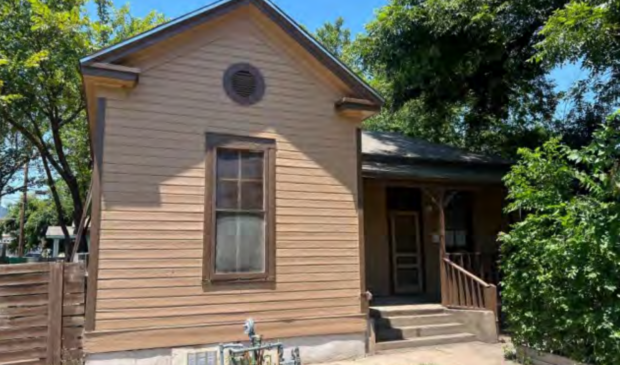Three ‘no’ votes end try for historic zoning in East Austin
Tuesday, July 23, 2024 by
Jo Clifton Despite efforts from Preservation Austin and approval from two city commissions, the small historic house at 1100 East Second St. failed to get support from the nine City Council members needed for it to be designated historic and avoid demolition. Both the Historic Landmark Commission and the Planning Commission recommended historic designation for the Sinnigson house, which is in District 3.
The home, identified as using folk Victorian architecture, was built between 1888 and 1897. According to documents related to the case, “Sinnigson had worked as stage manager and carpenter for both the Millett Opera House and the Hyde Park Pavilion before moving to East Austin. … Over the course of his career, he became a prominent Austin builder.”
At Thursday’s Council meeting, representatives from Preservation Austin and the city’s Historic Preservation Officer Kalan Contreras, argued that the front part of the Sinnigson house could be preserved while the back part could be demolished.
“The Planning Commission has crafted a compromise solution, which both preserves the intact front of the original house and allows its incompatible rear additions to be removed and the back of the lot developed in accordance with the HOME amendment,” Contreras said. “This compromise has staff’s enthusiastic support.”
She concluded, “Staff feels this is an excellent compromise that helps preserve one of east Austin’s rapidly disappearing historic streetscapes, while also allowing the space to continue to serve Austin’s housing needs.”
Contreras said the East Austin historic resource survey, approved by Council in 2016, identified the Sinnigson house as eligible for local landmark designation and was individually eligible for listing in the National Register of Historic Places.
Josh Brunsmann, the owner’s real estate broker, argued against any preservation requirement. He said, “I understand the sentiment in regards to the historic preservation on this property, but this property is beyond disrepair.” He concluded, “This this would be a travesty to give this home historic preservation against the owner’s will,” adding that there was “a misunderstanding of the costs that are associated with being able to preserve this home.”
“We should be able to move forward with our demolition request,” he said.
Council Member Ryan Alter moved for approval, with a second from Council Member José Velásquez. Council Member Paige Ellis always votes against historic designation when the owner is opposed. Council Member Mackenzie Kelly joined her. With the rest of the Council in favor of the designation, Mayor Kirk Watson then turned to Council Member Natasha Harper-Madison, who voted no, ending the possibility of historic zoning and clearing the way for demolition.
JuanRaymon Rubio, who serves on the HLC and is a board member of Preservation Austin, told Council they should pay attention to recommendations from their commissions, pointing out that those citizens put in a lot of work on their recommendations.
“Months ago, we heard a lot of testimony from HOME 2. The community is really upset because they feel they’re being ignored. They’re asking you during those testimonies to prevent displacement, more tax abatements, more preservation of affordable housing. They asked if you’ll help seniors age in place. I beg you to take heed from those citizens that want to save their communities and its heritage. Take heed from your city planners. Take heed from your city commissions,” he said. “Less than 1 percent of Austin property is designated historic, and most of that is in wealthy white neighborhoods. If you designate this property, the owner can still develop their land. … You asked us to serve on these commissions. You asked staff to help guide community efforts. There’s nothing worse than throwing all that away. You’re throwing out all the time, advice, money and energy down the drain. You can use preservation as a tool to combat gentrification and affordability problems. The buck stops here. Our city’s heritage is at risk of destruction because tough decisions here are favoring profits over people.”
Council did not comment on the arguments.
The Austin Monitor’s work is made possible by donations from the community. Though our reporting covers donors from time to time, we are careful to keep business and editorial efforts separate while maintaining transparency. A complete list of donors is available here, and our code of ethics is explained here.
You're a community leader
And we’re honored you look to us for serious, in-depth news. You know a strong community needs local and dedicated watchdog reporting. We’re here for you and that won’t change. Now will you take the powerful next step and support our nonprofit news organization?








